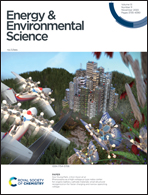Two-dimensional nonlayered materials for electrocatalysis
Abstract
Creating two-dimensional (2D) geometry from nonlayered catalytic materials may significantly advance electrocatalyst design. The 2D morphology of three-dimensional lattices (2D nonlayered materials) offer large structural distortions, massive surface dangling bonds, and coordinated-unsaturated surface atoms, which can induce high surface chemical activity and promote the chemisorption of reactants and fast interfacial charge transfer, thereby enhancing the electrocatalytic performance. In this article, we review typical strategies for structural engineering and manipulation of electronic states to enable the unique electrocatalytic advantages of 2D nonlayered materials. An overview is presented on recent research advances in the development of 2D nonlayered materials for catalyzing the representative electrochemical reactions that are essential to energy and sustainability, including hydrogen evolution, oxygen evolution, oxygen reduction, and CO2 reduction. For each type of redox reactions, their unique catalytic performance and underlying mechanism are discussed. Important achievements and key challenges are also discussed.



 Please wait while we load your content...
Please wait while we load your content...